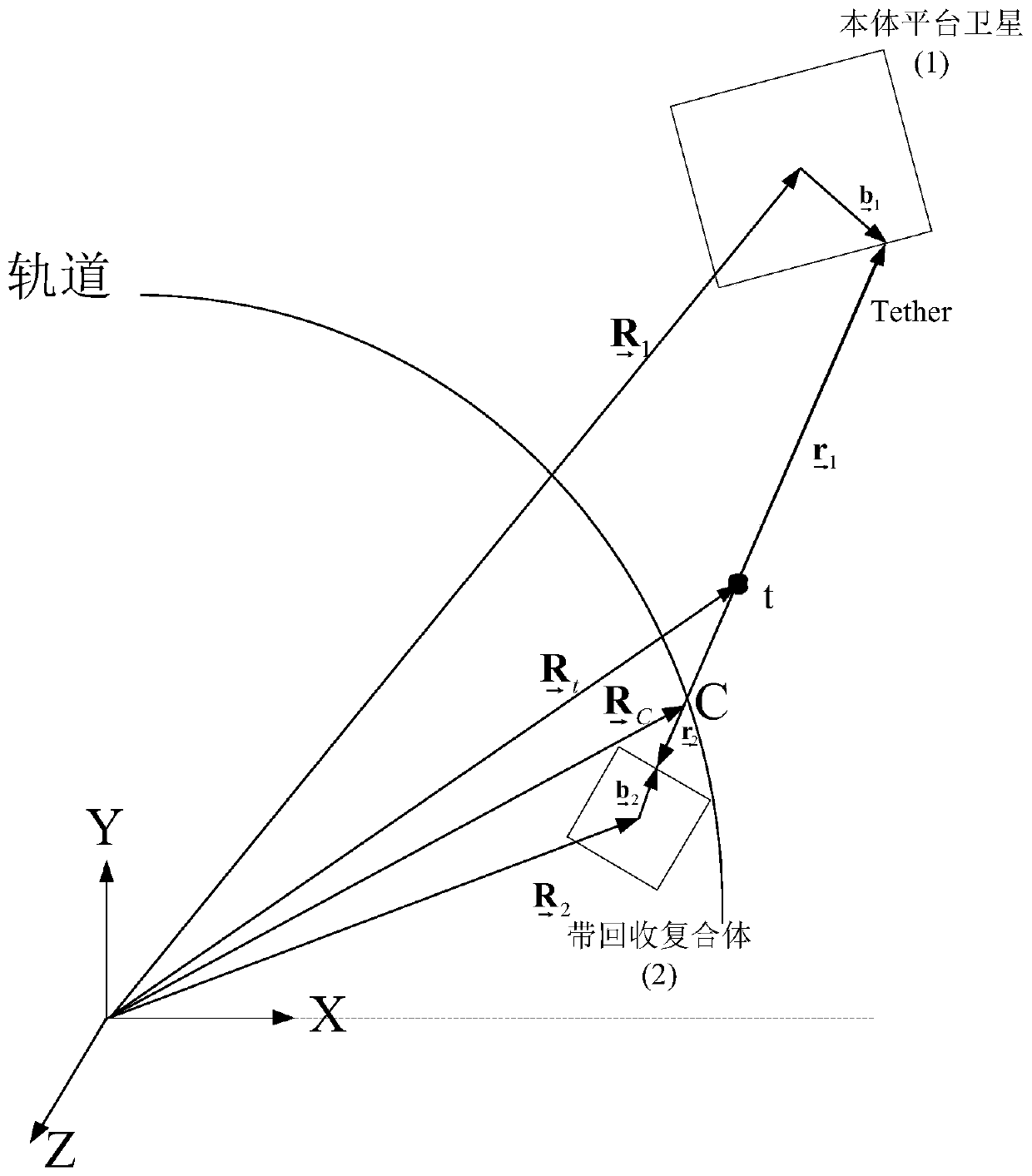Adaptive control method for space tethered robot to recover target after close-range capture
An adaptive control and space tethering technology, applied in the directions of adaptive control, general control system, control/regulation system, etc., can solve the problems of large influence of tether movement and complicated controller design, and achieve accurate calculation and recovery. smooth effect
- Summary
- Abstract
- Description
- Claims
- Application Information
AI Technical Summary
Problems solved by technology
Method used
Image
Examples
specific Embodiment approach
[0075] In the first step, a dynamic model of the entire system during recycling is established:
[0076] Ontology satellite R during tether recovery complex 1 , the recovery complex R consisting of satellites and tethered robots 2 , and the position of the tether centroid are:
[0077]
[0078] where b 1 is the position vector from the center of mass of the body satellite to the connection point of the tether, b 2 is the position vector from the center of mass of the complex to be recovered to the connection point of the tether, r 1 is the position vector from the center of mass of the system to the center of mass of the satellite, r 2 is the position vector from the center of mass of the system to the center of mass of the complex, r t is the position vector from the system centroid to the tether centroid.
[0079] The translational kinetic energy of the system is:
[0080]
[0081] in and Respectively represent R in the formula (1) 1 , R 2 , and R t,i der...
PUM
 Login to View More
Login to View More Abstract
Description
Claims
Application Information
 Login to View More
Login to View More - R&D
- Intellectual Property
- Life Sciences
- Materials
- Tech Scout
- Unparalleled Data Quality
- Higher Quality Content
- 60% Fewer Hallucinations
Browse by: Latest US Patents, China's latest patents, Technical Efficacy Thesaurus, Application Domain, Technology Topic, Popular Technical Reports.
© 2025 PatSnap. All rights reserved.Legal|Privacy policy|Modern Slavery Act Transparency Statement|Sitemap|About US| Contact US: help@patsnap.com



